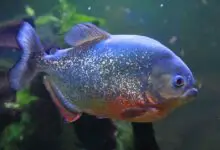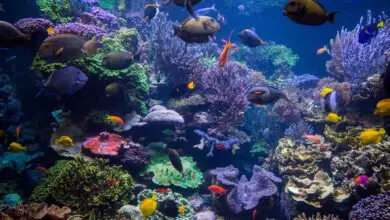The Importance of Quarantine for New Fish

Introducing new fish to an established aquarium can be exciting. However, it also carries risks. New fish may carry diseases or parasites that can spread to existing fish. Setting up a quarantine tank allows new fish to be observed and treated before adding them to a display tank. Quarantine periods usually last 2-4 weeks. This gives time for diseases to manifest so they can be treated. Quarantine tanks keep everyone safer.
Why Quarantine New Fish
Quarantine tanks provide a place to isolate new fish before adding them to an existing tank. This allows time to:
- Observe fish for signs of disease
- Treat any illnesses before they spread
- Acclimate fish to new water parameters
- Reduce stress from transport and introduction
Without quarantine, new fish go straight into the display tank. Diseases and parasites can quickly spread to existing fish. In some cases, entire tanks can be lost. Quarantine tanks act as a vital safeguard. They let you identify and resolve health issues first.
Quarantine Tank Setup
Quarantine doesn’t have to be complicated. A basic quarantine tank requires just a few key elements:
- Tank – 10-30 gallons, with lid and light
- Filter – hang-on-back, canister or sponge filter
- Heater – adjust temperature to match display tank
- No substrate – bare bottom tank simplifies cleaning
- Decor – simple decor like PVC pipes or plastic plants
The tank should be set up in advance. Allow the filter to mature for 1-2 weeks before adding fish. Perform regular water changes to build up beneficial bacteria.
Once cycled and ready, the quarantine tank provides a stable environment for new arrivals. Simple decor helps reduce stress. Bare bottom tanks make it easier to monitor fish health and behavior.
Water Testing is Critical
Frequent water testing is vital in a quarantine tank. Ammonia and nitrite levels should be zero. Nitrate should be kept low, under 20 ppm. Use a liquid test kit to monitor:
- Ammonia
- Nitrite
- Nitrate
- pH
- Hardness (GH and KH)
Test every 1-2 days and perform water changes as needed. Match pH and temperature to the display tank. Acclimate fish slowly when moving between tanks. Reducing stress supports the immune system.
Recognizing Disease Symptoms
The quarantine period allows diseases to manifest. Stay alert for any signs of illness including:
- Spots or lesions – keep an eye out for white spots, fuzzy patches or open wounds. These could indicate bacterial, fungal or parasitic infections.
- Erratic swimming – fish that swim awkwardly, scrape against objects, or have trouble staying upright may be infected.
- Clamped fins – clamped fins are a sign of stress or discomfort. Watch if fins stay closed against the body.
- Loss of appetite – healthy fish are eager to eat. Lack of appetite or difficulty swallowing food can signal illness.
- Gasping at surface – gasping, gulping or piping at the surface means the fish can’t breathe properly. This requires urgent attention.
- Sluggishness – lethargic fish that isolate themselves could be getting sick. Lack of movement and energly is a bad sign.
Daily observation allows you to detect disease early. Never introduce fish that show any symptoms into the display tank. Diagnose and treat the illness first in quarantine.
Choosing Medications
If disease is suspected, begin treatment promptly. Use aquarium salt and certain medications to target common freshwater diseases:
- Ich – raised white dots resemble salt grains. Treat with medications containing malachite green, methylene blue or copper. Raise temperature to speed life cycle.
- Velvet – fine gold or rust colored dusting on fins and body. Use copper based treatments along with aquarium salt and raised temperature.
- Fungal infections – cottony growth, decaying fins. Treat with antifungal containing methylene blue, malachite green or potassium permanganate.
- Fin rot – frayed fins deteriorating from the edge inward. Combine antibiotics with antifungal medications. Use aquarium salt to support healing.
- Bacterial infections – red sores, swelling, abscesses. Use broad spectrum antibiotics paired with antifungal meds.
Follow all medication labels carefully. Remove carbon from filters during treatment. Improve results by combining medications with higher temperature and aquarium salt.
Feeding Medicated Fish Food
For internal bacterial infections, the best treatment is medicated fish food. The fish eats the food, delivering medication internally. This targets problems in the digestive tract and internal organs that liquid medications can’t reach.
Some medicated foods to stock:
- Metronidazole – treats internal protozoal infections like hexamita or spineo. Effective against anaerobic bacterial infections.
- Sulfadimethoxine – treats systemic bacterial infections affecting organs and bloodstream. Broad spectrum antibiotic.
- Nitrofuranace – another broad spectrum internal antibiotic. Fights gram positive and gram negative bacterial diseases.
- Ampicillin – wide spectrum antibiotic effective against common fish bacteria like aeromonas and pseudomonas.
Use soaked pellets to target a specific sick fish. Or treat the whole quarantine tank by feeding medicated food exclusively for 5-7 days. Discontinue other foods during medicated feedings.
Disinfecting the Tank
Once a quarantine period ends, all equipment must be disinfected before reuse. Scrub decor thoroughly and disinfect with a dilute bleach solution. Rinse extremely well before returning to the tank.
It’s ideal to have a dedicated quarantine tank. If disinfecting the same tank for reuse, follow these steps:
- Remove fish, decor, plants and filter media
- Drain, scrub and rinse the tank to remove organic matter
- Fill with diluted bleach – use 1 part bleach to 19 parts water
- Let stand for 15 minutes, scrubbing sides and lid
- Drain tank and rinse thoroughly until no bleach scent remains
- Wipe down outside with disinfectant and rinse again
- Set tank up again with fresh decor, plants and new filter media
Thorough cleaning prevents pathogens from remaining in the tank. Always wear gloves and work in a well-ventilated area when using bleach.
Acclimating Fish after Quarantine
Once quarantine ends, fish can be moved into the display tank. The transition should be gradual. To acclimate:
- Float bag of fish to equalize temperatures, adding small amounts of tank water over 10-15 minutes
- Net fish into a bucket and discard bag water (don’t add bag water to tank)
- Slowly add display tank water to the bucket over 30-60 minutes
- Release fish gently into the aquarium
Match pH and other parameters as closely as possible between tanks. Provide lots of hiding spots so new fish feel secure. Dim the lights and avoid tank disturbances for the first few days.
Quarantine allows fish to settle in slowly. By the end of the process, new fish adapt well and make a healthy addition to displays.
Quarantine Benefits Every Aquarium
Quarantine tanks aren’t just for brand new fish. They can be used any time new inhabitants are added, including:
- New fish from pet stores or breeders
- Fish returning from hospital or breeding tanks
- Fish purchased from other hobbyists
- Fish moved from one main tank to another
Even plants or decor from unknown sources carry disease risks. Quarantine best practices prevent many common problems:
- Ich outbreaks
- Devastating bacterial infections
- Fast-spreading parasites
- Mysterious deaths shortly after adding new fish
A basic quarantine setup is easy to maintain. The benefits far outweigh a small extra investment of time and money. Protect your fish, your investment and your enjoyment of the hobby with a simple quarantine tank.







